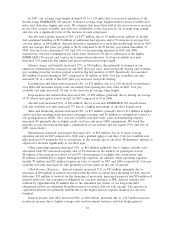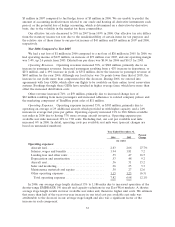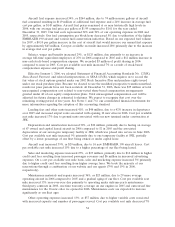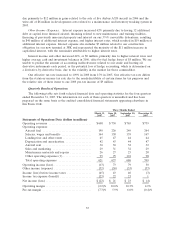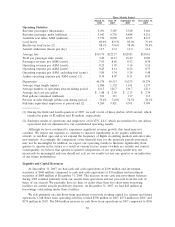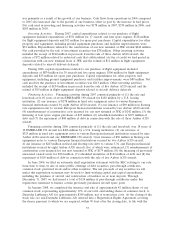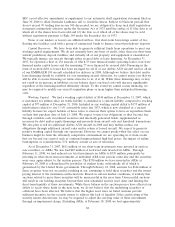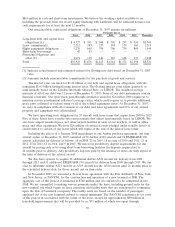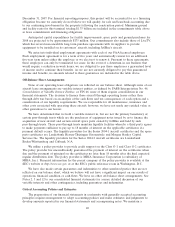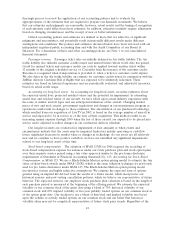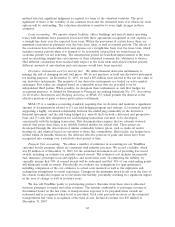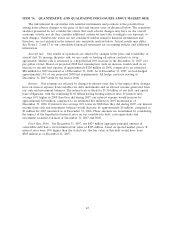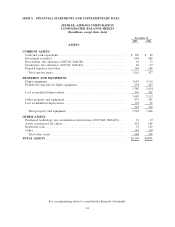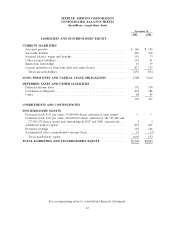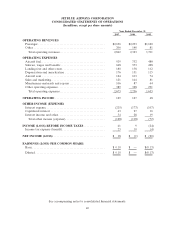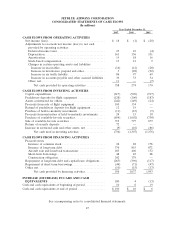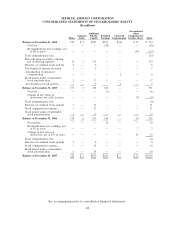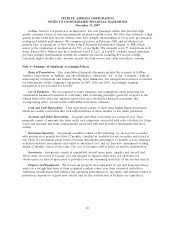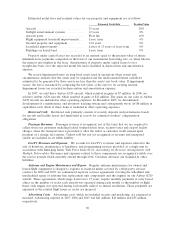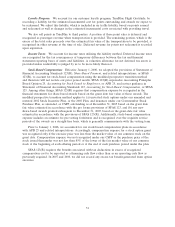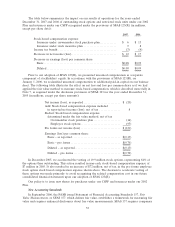JetBlue Airlines 2007 Annual Report Download - page 52
Download and view the complete annual report
Please find page 52 of the 2007 JetBlue Airlines annual report below. You can navigate through the pages in the report by either clicking on the pages listed below, or by using the keyword search tool below to find specific information within the annual report.method selected, significant judgment is required for some of the valuation variables. The most
significant of these is the volatility of our common stock and the estimated term over which our stock
options will be outstanding. The valuation calculation is sensitive to even slight changes in these
estimates.
Lease accounting. We operate airport facilities, offices buildings and aircraft under operating
leases with minimum lease payments associated with these agreements recognized as rent expense on
a straight-line basis over the expected lease term. Within the provisions of certain leases there are
minimum escalations in payments over the base lease term, as well as renewal periods. The effects of
the escalations have been reflected in rent expense on a straight-line basis over the lease term, which
includes renewal periods when it is deemed to be reasonably assured that we would incur an
economic penalty for not renewing. The amortization period for leasehold improvements is the term
used in calculating straight-line rent expense or their estimated economic life, whichever is shorter.
Had different conclusions been reached with respect to the lease term and related renewal periods,
different amounts of amortization and rent expense would have been reported.
Derivative instruments used for aircraft fuel. We utilize financial derivative instruments to
manage the risk of changing aircraft fuel prices. We do not purchase or hold any derivative instrument
for trading purposes. At December 31, 2007, we had a $33 million asset related to the net fair value of
our derivative instruments. The majority of our derivative instruments are traded on active market
exchanges. Fair values are assigned based on commodity prices that are provided to us by
independent third parties. When possible, we designate these instruments as cash flow hedges for
accounting purposes, as defined by Statement of Financial Accounting Standards No. 133, Accounting
for Derivative Instruments and Hedging Activities, or SFAS 133, which permits the deferral of the
effective portions of gains or losses until contract settlement.
SFAS 133 is a complex accounting standard, requiring that we develop and maintain a significant
amount of documentation related to (1) our fuel hedging program and strategy, (2) statistical analysis
supporting a highly correlated relationship between the underlying commodity in the derivative
financial instrument and the risk being hedged (i.e. aircraft fuel) on both a historical and prospective
basis and (3) cash flow designation for each hedging transaction executed, to be developed
concurrently with the hedging transaction. This documentation requires that we estimate forward
aircraft fuel prices since there is no reliable forward market for aircraft fuel. These prices are
developed through the observation of similar commodity futures prices, such as crude oil and/or
heating oil, and adjusted based on variations to those like commodities. Historically, our hedges have
settled within 24 months; therefore, the deferred effective portions of gains and losses have been
recognized into earnings over a relatively short period of time.
Frequent flyer accounting. We utilize a number of estimates in accounting for our TrueBlue
customer loyalty program, which are consistent with industry practices. We record a liability, which
was $5 million as of December 31, 2007, for the estimated incremental cost of providing free travel
awards, including an estimate for partially earned awards. The estimated cost includes incremental
fuel, insurance, passenger food and supplies, and reservation costs. In estimating the liability, we
currently assume that 90%of earned awards will be redeemed and that 30%of our outstanding points
will ultimately result in awards. Periodically, we evaluate our assumptions for appropriateness,
including comparison of the cost estimates to actual costs incurred as well as the expiration and
redemption assumptions to actual experience. Changes in the minimum award levels or in the lives of
the awards would also require us to reevaluate the liability, potentially resulting in a significant impact
in the year of change as well as in future years.
We also sell TrueBlue points to participating partners. Revenue from these sales is allocated
between passenger revenues and other revenues. The amount attributable to passenger revenue is
determined based on the fair value of transportation expected to be provided when awards are
redeemed and is recognized when travel is provided. Total sales proceeds in excess of the estimated
transportation fair value is recognized at the time of sale. Deferred revenue was $35 million at
December 31, 2007.
42


